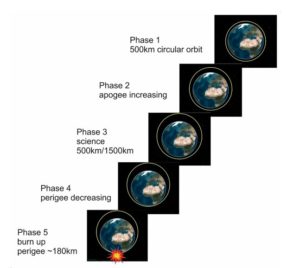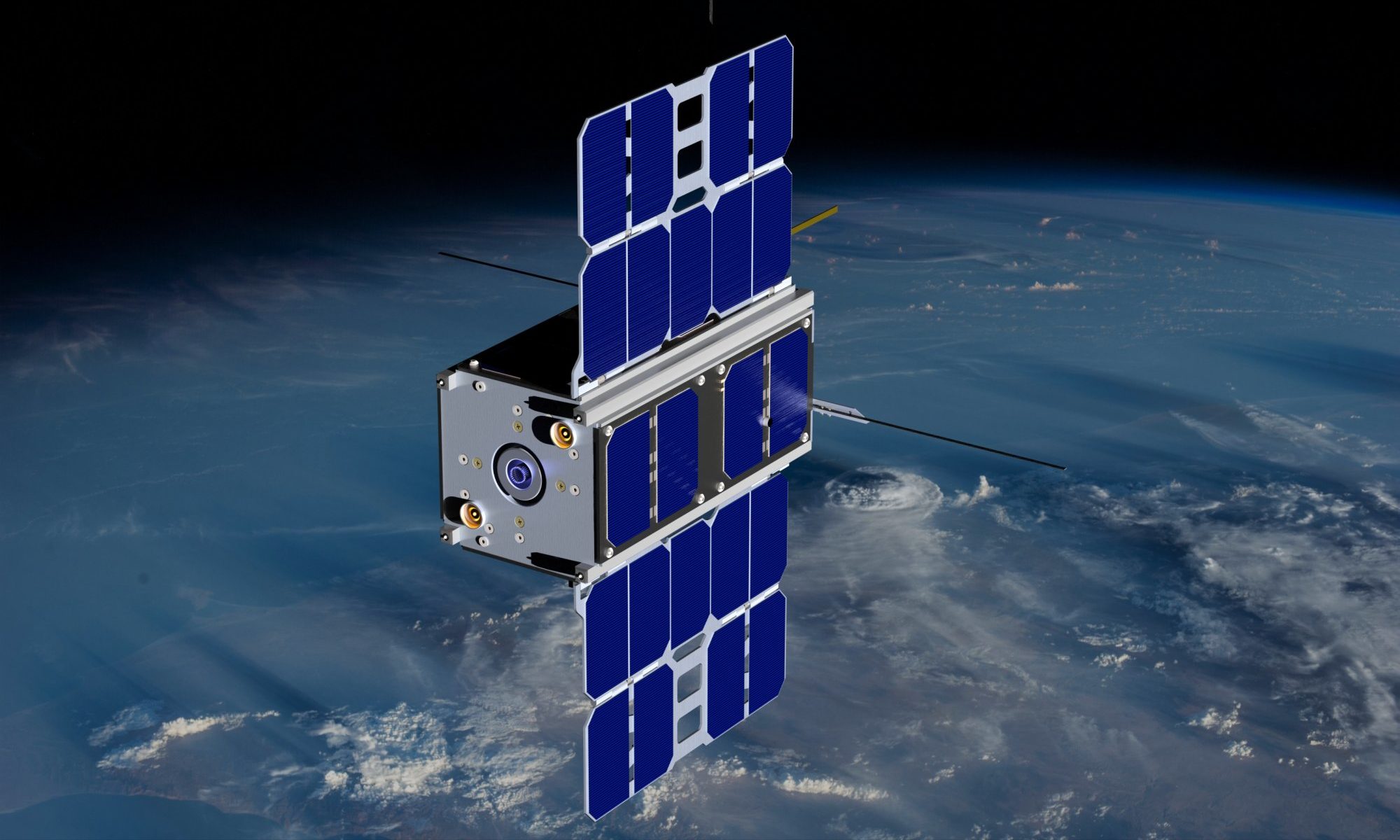CLIMB is largely an educational project with the goal to educate students in spacecraft engineering and spacecraft operation as well as in scientific aspects of a space mission.
CLIMB will be deployed from the launch vehicle into a Low Earth Orbit (LEO) of about 500km altitude and an inclination of 98° (quasi sun synchronous orbit). After the launch and early operation phase (LEOP) and the commissioning phase, both phases will last some weeks, CLIMB will start to increase the apogee of the orbit with the help of its thruster up to 1500km. The thruster is a field-emission electric propulsion (FEEP) system, which is using liquid Indium as a propellant. When the satellite reaches an apogee of 1000km, an altitude where the inner Van Allen Belt begins, the science phase will start and the mission will focus on data collection of the magnetic field and radiation dose. After reaching the maximum apogee and finishing the science objectives, CLIMB will lower the perigee of the orbit with the use of the thruster into the denser areas of the atmosphere. The mission will end with the satellite breaking up and burning up completely in the atmosphere at a perigee between 200km and 180km.

Mission Objectives
The primary mission objective of the project is the education of students. In order to increase the educational benefit, the mission shall have also a real technological and scientific objective. This allows also to include engineers and scientist from industry and R&D oriented entities
Scientific and technological objectives:
- Scientific measurements of the magnetic field and radiation dose of the inner part of the Van Allen Belt.
- Prove of concept of a propulsion system with significant Dv capability for Nano-Satellites
- Introduction of subsystems with sufficient lifetime and radiation resistance
- S-band communication for downloading measurement data and uploading firmware

